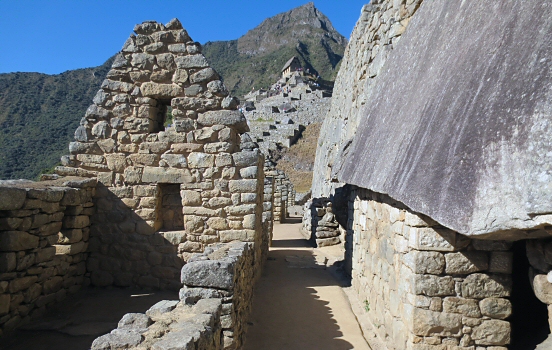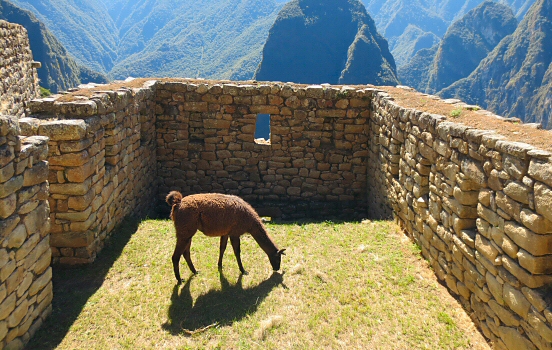They say the journey matters more than the destination. That’s easy to say when the destination doesn’t involve dragging yourself out of bed at 4 AM in a town that smells like damp socks and stale pizza. But when that destination is Machu Picchu, the sacred city of stone, it all makes sense.
We stayed for the night in Aguas Calientes, a town that feels like someone tried to build a ski resort, got drunk halfway through, and gave up. Picture a place where souvenir stalls outnumber locals three to one and pizza places proudly serve “Swedish meatballs.”.
As if the early morning start wasn’t bad enough, I had initially some trouble adjusting to the altitude. At 2430 meters above sea level, my breathing got more strained during the steep climbing. While I was busy breathing like Darth Vader, a llama was standing next to me, looking very unimpressed.
And then, like a magic trick, there it was. Machu Picchu.
The ruins emerged from the mist like a secret whispered through centuries of silence. Stone walls that refuse to crumble, terraces that defy gravity and a landscape that looks like it was carved by the gods on a good day. It’s every National Geographic photo ever seen, but better, because now I was sweaty, sore, and standing in the middle of it.
 Top of the world.
Top of the world.
When I was a little boy, I used to read the comic book adventures of Tintin where he ended up in Machu Picchu. At the time the site felt impossibly distant. But here I was, gazing down upon the final treasure of the Incas.
 Exploring the ruins.
Exploring the ruins.
I entered the ruins through the Main Gate and placed my hand on the smooth walls while marveling at the engineering skills once used to build this place. Machu Picchu is believed to have been constructed around 1450, but unlike most other Inca cities the conquistadors never found it as it was perched deep in the Peruvian Andes. After being abandoned in 1527, the site was relatively unknown until the famous “re-discovery” by Hiram Bingham in 1911.
 Don’t mind me, just doing my llama stuff.
Don’t mind me, just doing my llama stuff.
In Che Guevara’s travel memoir “The Motorcycle Diaries”, he chose to play a game of soccer in the ruins. For me, any kind of physical activity was on the very bottom of my todo-list.
The buildings are impressive, but nothing can beat that first sprawling view of the area in the morning sunrise. As Paul Theroux once wrote:
“We continued to climb the steepness. It was not until the last step, at the brow of the hill, that the whole city was revealed. It sprawled across the peak, like a vast broken skeleton picked clean by condors.”
— Paul Theroux, The Old Patagonian Express (1979)
 Sunrise at Machu Picchu.
Sunrise at Machu Picchu.
For further reading, I recommend the book “Turn right at Machu Picchu” by Mark Adams (2011). He was adamant to follow in the footsteps of Bingham to the way of Machu Picchu, which made for an amusing story as he was more of an armchair adventurer, or “martini explorer” as his world-weary travel companion put it.

Comments
No comments yet.
Leave a reply